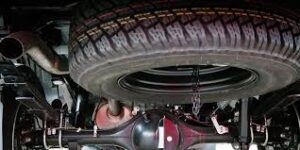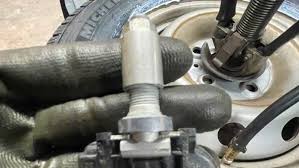Blog
“The Cost of TPMS Installation and Maintenance Explained”
The Cost of TPMS Installation and Maintenance Explained
A Tire Pressure Monitoring System (TPMS) is an essential safety feature for modern vehicles, alerting drivers when tire pressure is outside the recommended range. While this system offers undeniable benefits—enhanced safety, better fuel efficiency, and prolonged tire life—it’s essential to understand the costs associated with its installation and maintenance. This article breaks down the factors that influence TPMS costs, including installation, replacement, and ongoing maintenance.
What is TPMS and Why is it Important?
TPMS monitors tire pressure, ensuring optimal performance and safety. There are two primary types of systems:
- Direct TPMS: Uses sensors inside each tire to provide real-time pressure readings.
- Indirect TPMS: Relies on the car’s ABS system to estimate tire pressure based on wheel speed.
The choice of TPMS type influences both initial and long-term costs.
Factors Influencing TPMS Installation Costs
1. Type of TPMS System
- Direct TPMS: Requires sensors for each wheel, making it more accurate but also more expensive.
- Indirect TPMS: Typically less expensive as it uses existing vehicle systems, but may require recalibration after tire changes.
2. Sensor Quality
- OEM Sensors: Original Equipment Manufacturer (OEM) sensors are designed for specific vehicle models and offer high compatibility but come at a premium price.
- Aftermarket Sensors: These are more affordable but may require additional programming to work with your vehicle.
3. Vehicle Model
Luxury or newer vehicles often have more complex TPMS systems, leading to higher installation costs.
4. Labor Costs
The cost of labor varies by region and mechanic. Installation typically requires removing the tire, mounting the sensor, and recalibrating the system.

Average Costs for TPMS Installation
- Direct TPMS:
- Parts: $50–$200 per sensor
- Labor: $50–$100 per tire
- Total for Four Tires: $400–$1,200
- Indirect TPMS:
- Calibration Only: $50–$150 (no new parts required)
Replacement Costs: When and Why?
TPMS sensors typically last 5–10 years, depending on their battery life and usage. Replacement is necessary if:
- The sensor battery dies (non-replaceable in most cases).
- The sensor is damaged during tire changes or by road debris.
Replacement Costs
- OEM Sensors: $100–$250 per sensor
- Aftermarket Sensors: $50–$150 per sensor
- Labor: $50–$100 per tire
Maintenance Costs for TPMS
Maintaining your TPMS ensures it functions correctly and prolongs its lifespan. Here are common maintenance tasks and their associated costs:
1. Calibration
- Necessary after tire rotation, replacement, or significant system adjustments.
- Cost: $50–$100
2. Sensor Cleaning
- Dirt and debris can affect sensor performance, especially for direct TPMS.
- Cost: $20–$50 per tire
3. Sensor Battery Replacement
- While most TPMS sensors have non-replaceable batteries, some systems allow for battery replacement.
- Cost: $10–$30 per battery (if replaceable)
4. TPMS Software Updates
- Required for vehicles with advanced TPMS systems to stay compatible with updated sensors.
- Cost: $50–$150

Can You Save on TPMS Costs?
1. Opt for Aftermarket Sensors
Aftermarket TPMS sensors are often significantly cheaper than OEM options, though they may require additional programming.
2. Combine Services
When getting new tires or rotations, request TPMS calibration or maintenance as part of the service to save on labor costs.
3. DIY Options
For indirect TPMS systems, many calibration steps can be done at home by following your vehicle manual. However, direct TPMS systems typically require specialized tools.
TPMS vs. Long-Term Savings
While the upfront and maintenance costs of TPMS may seem high, the system often pays for itself by preventing underinflation, which can cause:
- Reduced Tire Life: Driving with underinflated tires leads to uneven wear and more frequent replacements.
- Lower Fuel Efficiency: Properly inflated tires improve gas mileage by up to 3%, translating to long-term fuel savings.
- Tire Blowouts: A properly functioning TPMS reduces the risk of dangerous and costly blowouts.
Conclusion
The costs associated with TPMS installation and maintenance can vary widely depending on your vehicle, the type of TPMS, and the quality of the sensors. While there is an upfront investment, the long-term safety and financial benefits far outweigh the initial expense. Regular maintenance ensures your TPMS operates effectively, enhancing your driving experience and protecting your wallet from unnecessary tire-related expenses.
For more tips on vehicle maintenance and TPMS systems, visit RegalXmuse.com!


